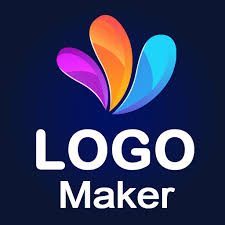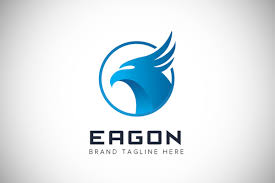The Art of Logo Design: Creating Memorable and Effective Logos
Logos are the visual representations of a brand’s identity. They serve as the face of a company, conveying its values, personality, and essence in a single image. A well-designed logo is crucial for building brand recognition and establishing a strong presence in the market.
So, what makes a logo design great? Here are some key elements to consider:
Simplicity
One of the most important principles of logo design is simplicity. A simple and clean design is more memorable and versatile. It allows for easy recognition and scalability across different platforms and mediums.
Relevance
A good logo should be relevant to the brand it represents. It should reflect the company’s values, products, or services in a meaningful way. The design elements used should resonate with the target audience and evoke the desired emotions.
Memorability
A memorable logo is one that sticks in people’s minds long after they’ve seen it. Whether it’s through unique shapes, colors, or typography, a distinctive design can leave a lasting impression on consumers and help differentiate a brand from its competitors.
Timelessness
While trends come and go, a timeless logo design withstands the test of time. Avoiding overly trendy elements ensures that the logo remains relevant and effective for years to come. A classic design can maintain its appeal even as styles evolve.
Versatility
A versatile logo is one that works well across various applications, from digital platforms to print media. It should be scalable without losing its impact, adaptable to different color schemes, and easily recognizable in different sizes.
In conclusion, creating the best logo design involves a careful balance of simplicity, relevance, memorability, timelessness, and versatility. By incorporating these key elements into your design process, you can craft logos that effectively communicate your brand’s identity and leave a lasting impression on your audience.
7 Essential Tips for Creating an Effective and Timeless Logo Design
- Keep it simple and memorable
- Ensure scalability for various sizes
- Choose appropriate colors and fonts
- Make it versatile for different applications
- Design with relevance to the brand’s identity
- Avoid trendy elements that may quickly become outdated
- Seek feedback and iterate for improvement
Keep it simple and memorable
When it comes to creating the best logo design, a crucial tip is to keep it simple and memorable. A clean and straightforward design not only makes the logo more versatile and easily recognizable but also ensures that it leaves a lasting impression on viewers. By stripping away unnecessary elements and focusing on a clear and impactful concept, you can craft a logo that effectively communicates your brand’s identity in a concise and memorable way.
Ensure scalability for various sizes
When designing a logo, it is crucial to ensure scalability for various sizes. A well-designed logo should maintain its clarity and impact whether it is displayed on a small business card or a large billboard. By considering scalability during the design process, you can guarantee that your logo remains recognizable and effective across different mediums and sizes, allowing for consistent branding and visual appeal.
Choose appropriate colors and fonts
Selecting the right colors and fonts is a crucial aspect of creating a successful logo design. Colors evoke specific emotions and can convey the brand’s personality, while fonts help communicate its tone and style. It is essential to choose colors that align with the brand’s identity and target audience, as well as fonts that are legible and complement the overall design. By carefully selecting appropriate colors and fonts, a logo can effectively communicate the brand’s message and make a memorable impact on viewers.
Make it versatile for different applications
When designing a logo, it is essential to make it versatile for different applications. A versatile logo can be easily adapted to various mediums such as digital platforms, print materials, merchandise, and more. Ensuring that the logo retains its clarity and impact across different sizes, color schemes, and backgrounds will enhance its effectiveness in conveying the brand’s identity consistently. By prioritizing versatility in logo design, you can create a visual symbol that remains recognizable and impactful in diverse contexts.
Design with relevance to the brand’s identity
When designing a logo, it is crucial to create with relevance to the brand’s identity. A logo should encapsulate the essence of the brand, reflecting its values, mission, and unique personality. By incorporating elements that resonate with the target audience and evoke the desired emotions, a logo becomes more than just a visual symbol – it becomes a powerful representation of what the brand stands for. Designing with relevance to the brand’s identity ensures that the logo effectively communicates the brand’s message and helps establish a strong connection with consumers.
Avoid trendy elements that may quickly become outdated
When striving to create the best logo design, it is crucial to steer clear of trendy elements that have a short lifespan and may quickly become outdated. By avoiding fleeting design fads and instead focusing on timeless and classic elements, you can ensure that your logo remains relevant and effective for years to come. Opting for enduring design choices will help your logo maintain its appeal and resonance with your audience, standing the test of time in a constantly evolving market landscape.
Seek feedback and iterate for improvement
Seeking feedback and iterating for improvement is a crucial tip in the process of creating the best logo design. By soliciting input from clients, colleagues, or target audience members, designers can gain valuable insights and perspectives that may not have been considered initially. Through this iterative process of receiving feedback, analyzing responses, and making adjustments, designers can refine their logo designs to better align with the brand’s identity and resonate with the intended audience. Continuous improvement based on constructive feedback leads to a more effective and impactful logo that truly represents the essence of the brand.




